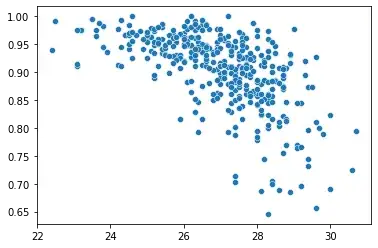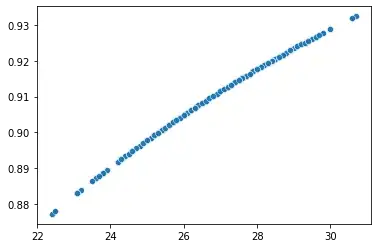I'm trying to fit a neural net to a pretty simple 1-variable regression problem. My output is a probability and the input is a continuous feature. The association is clearly negative. The below gives
X = np.array(impute_df['runner1_speed'])
y = np.array(impute_df['dest_1__'])
sns.scatterplot(x=X, y=y);
But with the simple net below, the fitted values are positively associated with the predictor.
inputs = keras.Input(shape=(1,))
hidden = layers.Dense(16, activation="relu")(inputs)
outputs = layers.Dense(1, activation="sigmoid")(hidden)
impute_mod = keras.Model(inputs=inputs, outputs=outputs, name="impute_mod")
impute_mod.compile(
loss=keras.losses.MeanSquaredError(),
optimizer=keras.optimizers.Adam(learning_rate=0.001))
history = impute_mod.fit(X, y, batch_size=4, epochs=20, verbose=0)
sns.scatterplot(x=X, y=impute_mod.predict(X)[:,0])
I must be doing something stupid but I can't figure out what. Any ideas? Thanks so much!

